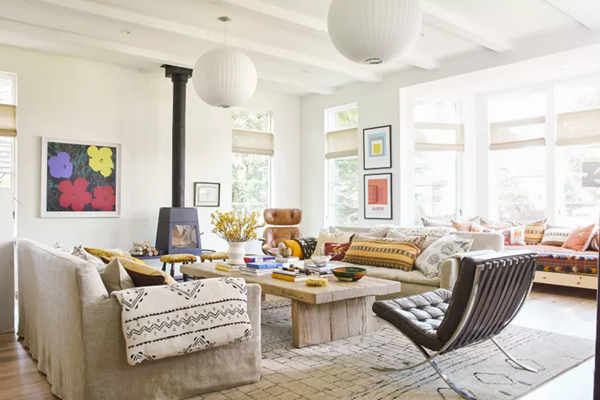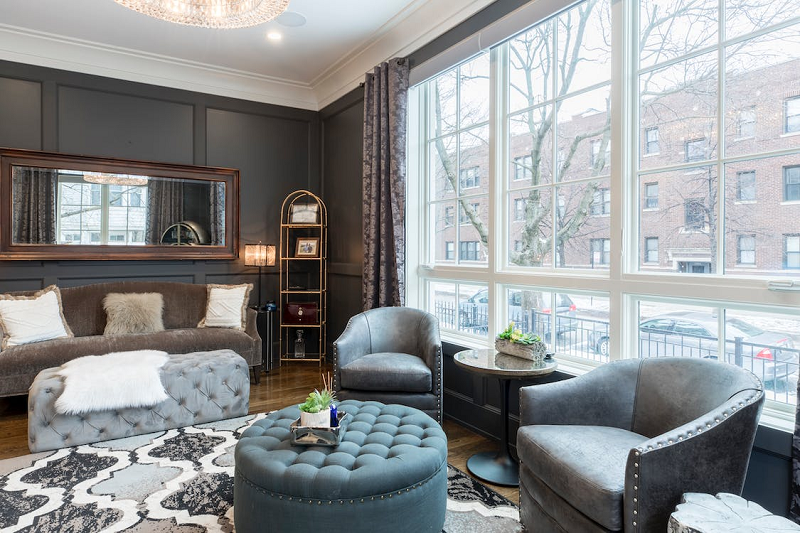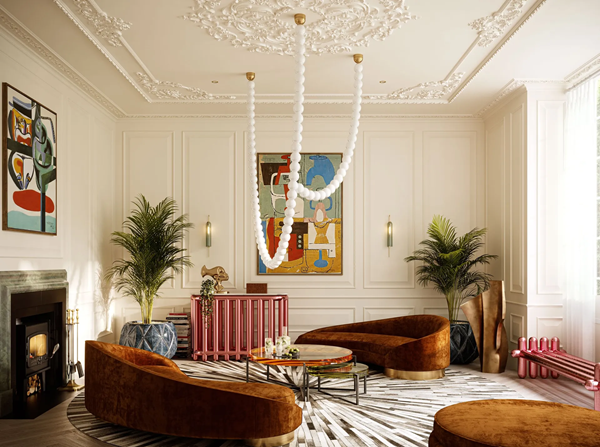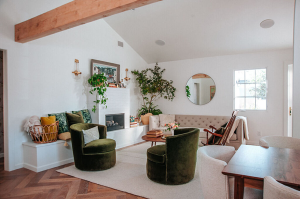Interior decorating basics can feel overwhelming when you’re staring at a blank room, wondering where to start and how to create the stylish, cohesive space you see in magazines. You’re not alone in feeling frustrated – studies show that 73% of homeowners feel intimidated by the decorating process, often spending money on random pieces that never come together into a unified design.

Here’s the truth: mastering interior decorating basics isn’t about having unlimited budget or perfect taste. It’s about understanding fundamental principles that professional designers use every day. This comprehensive guide will walk you through 5 essential interior decorating basics plus 5 bonus tips that will transform any room from chaotic to stunning, whether you’re working with $100 or $10,000.
By the end of this post, you’ll have a clear roadmap for decorating any space, practical tips you can implement today, and the confidence to create a home you absolutely love. Ready to discover how interior decorating basics can revolutionize your space? Let’s dive in.
I. Start With a Solid Foundation: Furniture Layout

The most crucial of all interior decorating basics is getting your furniture layout right. Before you choose a single paint color or accessory, you need to understand how your room flows and functions.
Picture this: You walk into a room where every piece of furniture hugs the walls like it’s afraid of the center. Instantly, the space feels awkward and unwelcoming. Professional designers know that proper furniture placement creates conversation areas, improves traffic flow, and makes rooms feel larger.
Here’s how to master furniture layout:
- Pull furniture away from walls – Create intimate conversation areas by floating sofas and chairs 12-18 inches from walls
- Create clear pathways – Maintain 3-foot walkways between furniture pieces for comfortable movement
- Define zones – Use area rugs to anchor different functional areas within larger rooms
- Consider the focal point – Arrange seating to face your room’s natural focal point (fireplace, large window, TV)
- Think about scale – Avoid pushing all large pieces to one side; distribute visual weight evenly
Pro Tip: Use painter’s tape to outline furniture placement on your floor before moving heavy pieces. This simple trick saves time and prevents back strain.
The magic happens when you realize that proper furniture layout costs nothing but transforms everything. According to recent interior design statistics, 30% of consumers favor minimalist designs that emphasize intentional furniture placement, proving that less cluttered, well-planned layouts are trending in 2025.
Also: How to Layer a Rug: A Complete Room-by-Room Guide
II. Incorporate Layers of Texture

One of the most transformative interior decorating basics involves creating depth through texture layering. Without varied textures, even the most expensive furniture looks flat and uninviting.
Why texture matters: Your eyes crave variety, and texture provides visual interest that keeps spaces engaging. Successful texture layering creates warmth, sophistication, and that “designer touch” that makes rooms feel complete.
Essential texture layering strategies:
- Mix materials mindfully – Combine smooth (glass, metal) with rough (natural wood, stone) and soft (fabric, fur) textures
- Layer textiles strategically – Add throw pillows in different fabrics, drape blankets over furniture, layer rugs for depth
- Incorporate natural elements – Woven baskets, live-edge wood, stone accessories bring organic texture
- Play with surface finishes – Mix matte and glossy finishes, combine painted and natural wood tones
- Add architectural texture – Consider wallpaper, wood paneling, or textured paint for walls
Picture This: A leather sofa topped with linen pillows, a chunky knit throw, sitting on a jute rug over hardwood floors, with a smooth ceramic vase holding dried pampas grass. Each element adds its own texture while contributing to a cohesive, layered look.
Pro Tip: Follow the “rule of three textures” – incorporate at least three different textures in every room for optimal visual interest without overwhelming the space.
Research shows that sustainable interior design can reduce energy consumption up to 50%, and many textural elements like natural fiber rugs and organic cotton textiles support eco-friendly decorating approaches.
Don’t Miss: 15 Best Interior Design Rules For Decorating Your Home
II. Add Unique Art Pieces and Accessories

Personal expression through art and accessories represents one of the most rewarding interior decorating basics. Your accessories tell your story and transform generic spaces into homes that reflect your personality and experiences.
Successful accessorizing isn’t about filling every surface with decorative objects. Instead, it’s about thoughtful curation that adds visual interest while maintaining clean, uncluttered spaces.
Masterful accessorizing principles:
- Follow the “rule of threes” – Group accessories in odd numbers for naturally pleasing arrangements
- Vary heights and shapes – Mix tall candlesticks with round bowls and rectangular books for dynamic compositions
- Tell a story – Display collections, travel souvenirs, or handmade items that have personal meaning
- Create gallery walls – Arrange artwork in cohesive groupings rather than scattered single pieces
- Edit ruthlessly – Remove items that don’t serve a purpose or bring you joy; less is often more
Picture This: A console table styled with three elements – a tall brass lamp, medium-sized ceramic vase with dried flowers, and small stack of coffee table books topped with a decorative object. Each piece serves a purpose while contributing to an curated, intentional look.
Pro Tip: Shop your own home first – gather accessories from around your house and rearrange them in new combinations before buying anything new. You’ll be surprised how fresh arrangements breathe new life into existing pieces.
Professional interior designers emphasize that shifts in design aesthetics tend to happen incrementally over time, with just 20% of survey takers giving mid-century modern most-favored status going into 2025, suggesting that eclectic, personal styling approaches are increasingly popular.
Also: 15 Best Soy Candles on Amazon
III. Add a Pop of Color

Understanding color theory ranks among the most powerful interior decorating basics. Color doesn’t just decorate your space – it influences mood, perceived room size, and overall atmosphere.
The psychology behind color explains why certain rooms make you feel energized while others promote relaxation. Master colorists know that successful color schemes follow proven formulas rather than random selection.
Your color strategy toolkit:
- Follow the 60-30-10 rule – 60% dominant neutral, 30% secondary color, 10% bold accent for balanced schemes
- Choose your neutral foundation – Warm whites, soft grays, or beiges create versatile backdrops for any style
- Add personality with accents – Introduce color through throw pillows, artwork, plants, and accessories that can easily change
- Consider natural light – North-facing rooms benefit from warm colors; south-facing rooms can handle cooler tones
- Test before committing – Paint large swatches and observe them at different times of day before final decisions
Picture This: A living room with soft gray walls (60%), navy blue sofa and curtains (30%), and vibrant coral pillows and artwork (10%). The result? A sophisticated space with personality that won’t feel dated next year.
Pro Tip: Start with one piece you love – a throw pillow, artwork, or rug – then pull your room’s color palette from that inspiration piece for instant cohesion.
About 44% of designers predict “Retro Nouveau” styling with rich jewel tones will be a major trend to watch in 2025, making this the perfect time to experiment with bolder color choices.
Also: How to Decorate Your Side Table for Style and Function
IV. Bring Life Indoors With Strategic Greenery

Among interior decorating basics, adding plants and greenery provides instant life, color, and air-purifying benefits to any space. But successful plant decorating goes beyond randomly placing a few plants around your room.
Plants do more than look pretty – they improve air quality, reduce stress, and connect us with nature. Strategic plant placement can fill awkward corners, soften harsh lines, and add vertical interest to your design scheme.
Smart greenery integration tactics:
- Choose plants for your lifestyle – Low-maintenance options like snake plants, pothos, or rubber trees for beginners
- Vary heights and sizes – Mix floor plants, tabletop varieties, and hanging plants for dynamic visual interest
- Group in odd numbers – Arrange plants in clusters of 3 or 5 for more natural, pleasing compositions
- Consider decorative containers – Beautiful planters become sculptural elements that enhance your decor style
- Create green focal points – Use large statement plants to anchor corners or frame architectural features
Picture This: A bright corner featuring a tall fiddle leaf fig in a woven basket, flanked by a medium snake plant in a ceramic planter, with trailing pothos cascading from a wall-mounted shelf above. The layered greenery creates a living art installation that changes with the seasons.
Pro Tip: Start with artificial plants if you’re nervous about plant care, then gradually replace with live plants as your confidence grows. Modern faux plants look incredibly realistic and require zero maintenance.
25% of millennials now prioritize eco-friendly or sustainable design options, making plant integration both stylish and environmentally conscious for 2025 decorating trends.
Also: How To Choose the Right Coffee Table: A Comprehensive Guide
V. Define Your Space With An Area Rug

Area rugs serve as the foundation of successful room design and rank among the most versatile interior decorating basics. The right rug anchors furniture, defines spaces, and adds warmth both visually and literally to any room.
Most people choose rugs that are too small, creating disconnected, floating furniture arrangements that make rooms feel choppy and unfinished. Professional designers know that proper rug sizing dramatically impacts how spacious and cohesive rooms appear.
Rug selection and sizing guidelines:
- Size appropriately – Front legs of all major furniture pieces should sit on the rug, or all legs should be off
- Living rooms need large rugs – 8’x10′ minimum for most seating areas, 9’x12′ for larger spaces
- Layer for interest – Place smaller rugs over larger natural fiber rugs for texture and visual depth
- Choose materials wisely – High-traffic areas need durable fibers like wool or synthetic blends
- Consider pattern carefully – Bold patterns make statements but limit flexibility; subtle patterns offer versatility
Picture This: A living room where a 9’x12′ neutral rug anchors the seating area with all furniture front legs placed on the rug surface, creating a unified conversation zone that feels intentional and spacious.
Pro Tip: Use painter’s tape to outline rug dimensions on your floor before purchasing to ensure proper scale and placement. This prevents costly sizing mistakes.
The growing home decor market, with Interior Design Services Market size estimated at $145.01 billion in 2025, reflects increased consumer investment in quality foundational pieces like area rugs that anchor successful room designs.
Also: Best Fall Decor Finds That Will Make Your Home Feel Like Autumn

Bonus Tips: 5 Additional Interior Decorating Basics
To help you take your decorating skills to the next level, here are 5 brand new bonus tips! These additional insights go beyond the basics, offering you fresh ideas and practical strategies to create a space that truly reflects your personality and style.
Whether you’re just starting out or looking to refine your existing decor, these tips are designed to give you a deeper understanding of interior decorating and inspire you to make confident choices in your room.
VI. Illuminate Your Space With Layered Lighting

Lighting might be the most overlooked of all interior decorating basics, yet it dramatically impacts how your space looks and feels. Poor lighting ruins even the best decorating efforts, while great lighting elevates budget-friendly spaces.
Professional designers never rely on overhead lighting alone. Instead, they create “lighting layers” that serve different functions throughout the day and enhance the room’s best features.
Essential lighting layer components:
- Ambient lighting – General room illumination through ceiling fixtures, recessed lights, or chandeliers
- Task lighting – Focused light for specific activities like reading lamps, under-cabinet kitchen lighting, desk lamps
- Accent lighting – Decorative lighting that highlights artwork, architectural features, or creates mood (wall sconces, picture lights)
- Natural light optimization – Maximize daylight with strategic mirror placement and light-colored window treatments
- Dimmer switches – Control light intensity for different moods and times of day
Picture This: An evening living room where table lamps cast warm pools of light, accent lights highlight artwork, candles flicker on the coffee table, and overhead lights are dimmed low. The atmosphere transforms from daytime functionality to evening relaxation.
Pro Tip: Place lamps at different heights throughout your room – some on side tables, others on consoles or plant stands – to create interesting shadows and prevent flat lighting.
The global home decor market, forecasted at $139.05 billion in 2025, reflects growing investment in quality lighting solutions as homeowners recognize their impact on interior design success.
Don’t Miss: How to Style a Sideboard: Room-by-Room Decorating Guide
VII. Maximize Storage With Stylish Solutions

Clutter kills even the best decorating efforts, making storage solutions essential among interior decorating basics. Effective storage doesn’t mean hiding everything – it means creating systems that keep your space organized while enhancing your decor style.
Beautiful storage prevents the constant battle between wanting your space to look magazine-perfect and actually living in it comfortably. Smart storage solutions serve dual purposes as functional organization and decorative elements.
Stylish storage strategies:
- Choose furniture with built-in storage – Ottoman storage cubes, console tables with drawers, beds with underneath storage
- Install floating shelves – Display books, plants, and decorative objects while keeping surfaces clear
- Use attractive containers – Woven baskets, ceramic bowls, and wooden boxes corral small items beautifully
- Create command centers – Designate specific areas for keys, mail, and daily essentials to prevent counter clutter
- Maximize vertical space – Use tall bookcases and wall-mounted storage to keep floor space open
Picture This: A living room featuring a large storage ottoman that holds blankets and games, floating shelves displaying books and plants, and attractive baskets tucked under the console table containing remotes and charging cables. Everything has a designated home while contributing to the room’s overall aesthetic.
Pro Tip: Invest in storage pieces that match your decor style – they’ll motivate you to stay organized while looking intentional rather than like an afterthought.
Current home decor trends show that interior design ideas combine style with functionality and wellness, making beautiful storage solutions both practical and on-trend.
Trending Post: Household Decorative Items to Avoid When Decorating
VIII. Create Depth With Mirrors and Reflective Surfaces

Strategic mirror placement represents one of the most powerful yet underutilized interior decorating basics. Mirrors don’t just reflect your appearance – they reflect light, create the illusion of space, and add glamorous sparkle to any room.
Small spaces benefit enormously from well-placed mirrors that bounce natural light around rooms and create sight lines that make areas appear larger. Even large spaces gain sophistication through thoughtful mirror integration.
Mirror magic techniques:
- Reflect natural light – Place mirrors opposite or adjacent to windows to amplify daylight throughout the room
- Create virtual windows – Hang mirrors on walls without windows to simulate additional light sources
- Add architectural interest – Use mirrors with interesting frames as wall art that serves dual purposes
- Expand narrow spaces – Long mirrors along hallways or behind furniture make tight areas feel more spacious
- Layer with other reflective elements – Combine mirrors with metallic accents, glass accessories, and glossy surfaces
Picture This: A small dining room where a large mirror opposite the window doubles the natural light, while a mirrored sideboard reflects the chandelier above, creating sparkle and the illusion of a much larger, brighter space.
Pro Tip: Avoid placing mirrors directly across from each other, which creates an infinite reflection effect that can feel disorienting rather than spacious.
Professional designers recognize that the international growth rate for interior design markets will hit 4% by 2025, with mirror and reflective element integration being key differentiators in sophisticated spaces.
Don’t Miss: 8 Interior Styling Tips and Secrets to Refresh Any Room Instantly
IX. Establish Focal Points and Visual Anchors

Every successful room needs a clear focal point – this principle tops the list of advanced interior decorating basics. Without a focal point, eyes wander aimlessly around the space, creating visual chaos rather than intentional design.
Focal points guide attention and create hierarchy within your room’s design. They can be architectural features (fireplaces, large windows), artwork, statement furniture pieces, or created elements like gallery walls.
Focal point creation strategies:
- Identify existing focal points – Work with architectural features like fireplaces, built-ins, or large windows first
- Create focal points through contrast – Use bold colors, large-scale art, or dramatic lighting to draw attention
- Arrange furniture to support focal points – Position seating to face or frame your chosen focal point
- Avoid competing focal points – Limit yourself to one major focal point per room to prevent visual competition
- Scale appropriately – Focal points should be proportional to room size; small rooms need subtler focal points
Picture This: A living room where a large abstract painting above the sofa serves as the focal point, with all seating arranged to face this wall, table lamps highlighting the artwork, and accessories chosen to complement rather than compete with this visual anchor.
Pro Tip: If your room lacks natural focal points, create one using a large piece of art, bold wallpaper on an accent wall, or a dramatic light fixture that immediately draws attention.
Current design statistics show 3,300 more job layouts will be created in interior design between 2018 and 2028, reflecting the growing recognition that professional focal point creation significantly impacts home values and livability.
Trending Post: 12 Designer-Approved Hanging Chair Tips for a Stylish Space
X. Master the Art of Layered Window Treatments

Window treatments rank among the most impactful yet overlooked interior decorating basics. The right window coverings provide privacy, control light, and add softness that balances hard architectural elements.
Layered window treatments create sophistication through combining different materials and functions. Professional designers rarely use single treatments when layered approaches offer more flexibility and visual interest.
Window treatment layering essentials:
- Start with function – Determine privacy needs, light control requirements, and insulation preferences first
- Layer for flexibility – Combine sheer curtains with heavier panels or blinds for day/night options
- Choose appropriate scale – Curtains should be wide enough to frame windows without blocking light when open
- Hang higher and wider – Mount curtain rods closer to the ceiling and extend beyond window frames to maximize apparent window size
- Consider room proportion – Floor-to-ceiling panels make rooms appear taller; shorter treatments work better with low ceilings
Picture This: Large living room windows dressed with white plantation shutters for privacy and light control, topped with flowing linen curtains in soft gray that pool slightly on the floor, creating layers of texture while maintaining clean lines.
Most Popular Post:
10 Surprising Benefits of Printable Wall Art
How to Choose The Right TV Size to Decorate Your Living Room
The ultimate Smart Home Design Guide: Automate your life
Tips for Home Decorating on a Budget: Where to Splurge and Save
10 Best Couch Colors That Make a Room Look Bigger
Conclusion
Mastering the interior decorating basics is essential for creating a truly captivating and personalized living space. By incorporating layers of texture, unique art pieces, pops of color, greenery, and touches of bold color, you can transform any room into a stylish and inviting environment that reflects your personality and preferences.
These fundamental elements not only enhance the aesthetic appeal of your space but also contribute to a sense of harmony, balance, and comfort. Whether you’re a seasoned decorator or a novice enthusiast, embracing these decor basics will enable you to elevate your room’s style and make it come to life. So, go ahead and unleash your creativity, experiment with different combinations, and discover the magic of interior decorating as you bring your vision to fruition. With the right foundation in place, your living space will become a true reflection of your unique style and taste.
FAQs: 5 Interior Decorating Basics
1. How do I incorporate layers of texture into my room?
Adding texture to your room is easy and can be achieved through various means such as rugs, throws, pillows, and woven baskets. Opt for different materials like faux fur, velvet, or natural fibers to create depth and visual interest.
2. Where can I find unique art pieces for my room?
You can discover unique art pieces at local galleries, art fairs, or online platforms like Etsy and Society6. Consider supporting independent artists or commissioning custom pieces that resonate with your personal style.
3. Can I still create a tranquil room with pops of color?
Absolutely! Tranquil spaces can benefit from pops of color to add warmth and energy. Choose a color palette that complements the overall aesthetic of your room and incorporate subtle touches through accessories or accent furniture.
4. What are some low-maintenance houseplants I can incorporate into my room?
Several low-maintenance houseplants require minimal care and can thrive indoors. Consider options like snake plants, pothos, succulents, or peace lilies, which are resilient and adaptable to various light conditions.
5. How can I effectively use bold colors in my room without overwhelming the space?
Start by incorporating bold colors in small doses through accessories like pillows, throws, or decorative accents. Balance bold hues with neutral tones to create visual harmony and prevent the room from feeling overly saturated.
6. Can I mix different textures and colors in the same room?
Yes, mixing textures and colors can add dimension and visual interest to your room. Experiment with contrasting textures and complementary color schemes to create a dynamic and cohesive space that reflects your personal style.
7. Are there any tips for maintaining indoor plants?
To maintain indoor plants, ensure they receive adequate sunlight, water them according to their specific needs, and periodically dust their leaves to keep them looking vibrant. Additionally, consider rotating plants to ensure even growth and monitor for any signs of pests or disease.
8. How can I stay updated on the latest interior decorating trends?
Stay informed about the latest interior decorating trends by following design blogs, social media influencers, and interior design magazines. Attend home decor expos or workshops to gain insights and inspiration from industry professionals. Additionally, engage with online communities and forums to exchange ideas and seek advice from fellow decorating enthusiasts.
9. Is it possible to incorporate interior decorating basics into a rental space?
Absolutely! You can personalize and enhance a rental space by focusing on temporary decor solutions like removable wallpaper, peel-and-stick tiles, and versatile furniture pieces that can easily transition to a new location. Additionally, invest in portable decor elements like rugs, curtains, and artwork that can be taken with you when you move.
10. What if I need personalized advice for my specific room?
If you need personalized advice for your specific room, consider consulting with a professional interior designer who can provide tailored recommendations based on your preferences, budget, and lifestyle. Many designers offer virtual consultations or design services to accommodate various needs and requirements.
Subscribe To the Newsletter!
Subscribe now for an endless feed of inspirational women’s cave decor ideas, pampering rituals, and more tips for curating your ultimate escape. Let’s start making your cozy refuge a reality – you so deserve this!
CATCH THE LATEST IN HOME DECOR TRENDS:

Steal These 16 Expert-Approved Decorating Secrets

How To Accessorize Your Living Room

Small Space? 10 Ways To Make A Room Appear Bigger

Make Your space Look Expensive
GET CAUGHT UP ON ALL THE INSPIRING DECOR TIPS:

18 Fresh Decorating Ideas To Update Your Fireplace

How To Create An Art Gallery Wall



